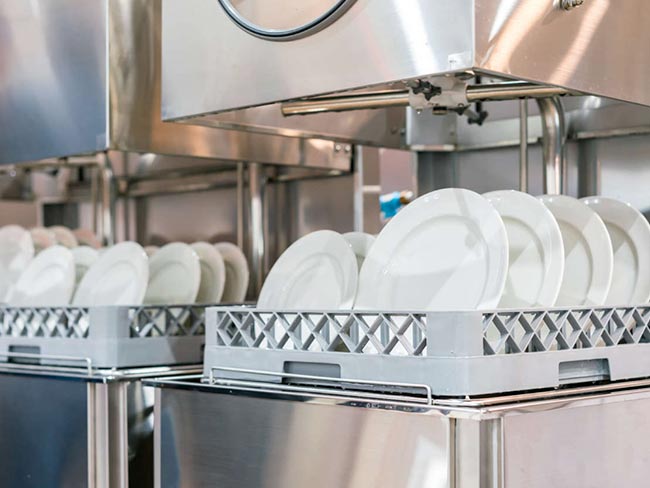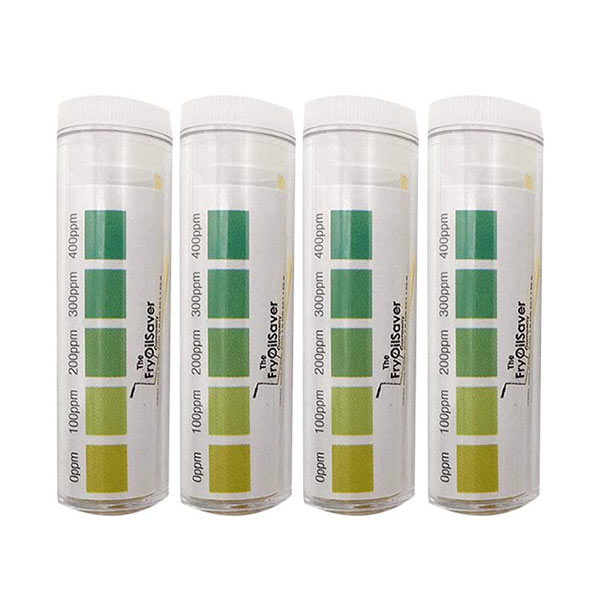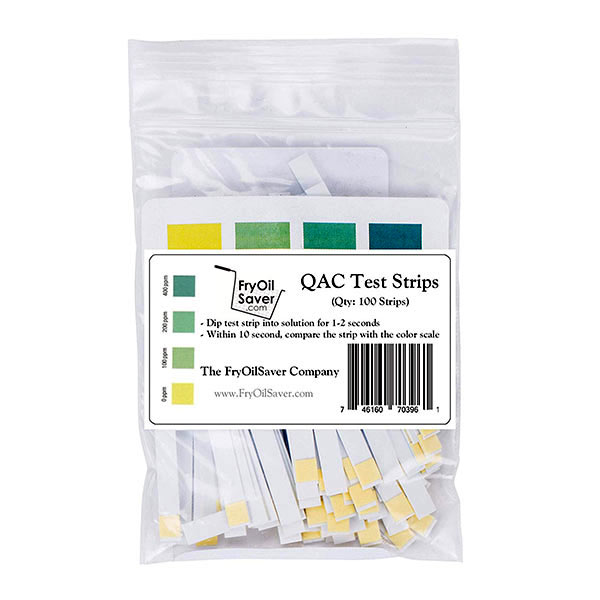- Free shipping throughout the USA!

Commercial sanitization is required by health department regulations across the US. Just washing your restaurants dishes is not enough. Regular dish washing gets rid of grime and grease, but does not effectively kill micro-organisms. Sanitization reduces the presence of germs and micro-organisms on surfaces by 99.999% to avoid cross-contamination. This can be achieved with anti-microbial chemicals or very hot water.
Why is testing the concentration of your sanitizer solutions important?
When going the chemical route, your sanitizing solutions need to be consistently monitored to ensure effective sanitizing action by means of sanitizer test strips and knowledge of health regulations. Chemicals deteriorate and food particles soil the solutions over time, so a strict testing regimen is mandatory.
Concentration that are too low leads to ineffective sanitizing, and concentrations too high can be dangerous. Relying on eyeballing your solutions can lead to heavy penalties, and even business closure, if health authorities deem your sanitizing practices not up to scratch. Always be prepared for your health inspections by keeping a good supply of sanitizer testing kits and keep all staff members expertly trained on sanitation and hygiene practices.
What chemical sanitizers can be used?
The 3 most commonly used chemicals in restaurants for sanitizing are Quaternary ammonium (also known as QUAT or QAC), chlorine (bleach), and iodine. The solutions made with these chemicals all need to be used in specific concentrations to be effective.
1. Chlorine Sanitizers
Chlorine, or bleach, is commonly used as a sanitizer. It’s effective, easy to acquire and inexpensive, but also has its downsides. Read: Steramine vs Bleach – which is better? Chlorine sanitizer solutions lose their sanitizing power more quickly than other options, and therefore need to be tested and changed more regularly.
Concentration required: 50 – 100 ppm
Water temperature required: 75 – 100 ‘F
Minimum contact time: 7 seconds
How to test chlorine sanitizer concentration:
You will need to use chlorine test strips to monitor the concentration of your chlorine solutions. Test strips for chlorine sanitizers are strips of paper specifically designed for testing chlorine concentrations only.
Dip a strip into the solution and immediately remove. A color develops on the strip. The color on the strip is then compared to a color chart to establish the concentration level. Most chlorine test strips measure concentrations between 10 – 200 parts per million.
It’s important not to touch chlorine test papers anywhere other than where you first grip it. Exposure to any moisture or oils other than the solution it must test will render it ineffective.
2. Quaternary Ammonium Sanitizers
Quaternary ammonium (QAC) based sanitizers are often preferred over chlorine and iodine sanitizers mostly due to its longer lifespan, non-corrosive nature and overall safeness. It’s a lot less caustic than chlorine and can handle a lot more soiling than the other options. Testing your QUAT sanitizer is still just as important though, as Quaternary ammonium does not function well in hard water.
Concentration required: 150 – 200 ppm
Water temperature required: 75 ‘F
Minimum contact time: 30 seconds
How to test Quaternary ammonium sanitizer concentration:
QUAT test papers are test strips made from litmus paper that are used to measure the concentrations of active quaternary ammonium compounds in your solutions. These test papers can usually test a range between 0 – 500 parts per million and come in tear-off rolls or pre-cut strips.
These are used in much the same way as other test papers. Dip a strip into the solution for a few seconds (2 – 10 seconds depending on manufacturer’s recommendation), let the color develop, and then compare to a color chart.
3. Iodine-based Sanitizers
Iodine solutions are not as commonly used as QUAT or chlorine sanitizers. It has its downsides, such as the risk of discolouration of your wares and being pH sensitive. Despite this, it is a safer, less corrosive and more long-lasting option than chlorine and is not affected by the hardness of water like Quaternary ammonium.
It’s important to note than iodine is not approved as a sanitizer in all locations across the US. Be sure to check your local health regulations before choosing iodine as your sanitizer.
Concentration required: 12.5 – 25 ppm
Water temperature required: 75 – 120 ‘F
Minimum contact time: 2 minutes
How to test Iodine sanitizer concentration:
Iodine solutions are brown which helps to quickly guess the strength of the solution depending on the shade, but this is not enough to accurately determine concentration levels. It’s still vital to test the solution with iodine test strips to ensure effectiveness.
Dip an iodine solution test strip into the solution for 60 seconds and then remove. Compare the developed color to the provided color chart.



